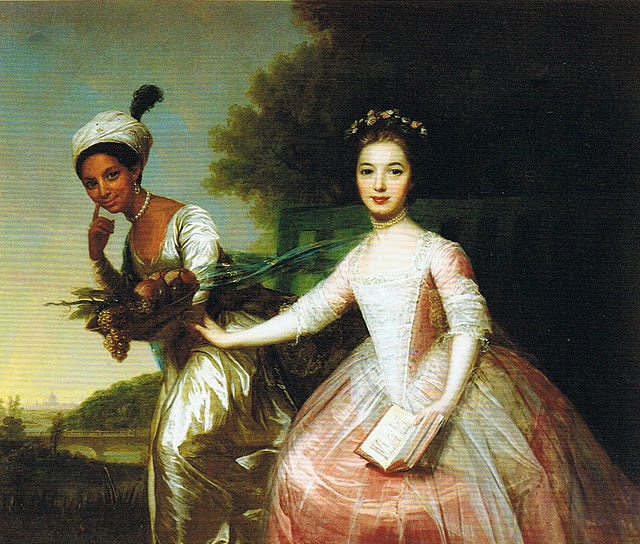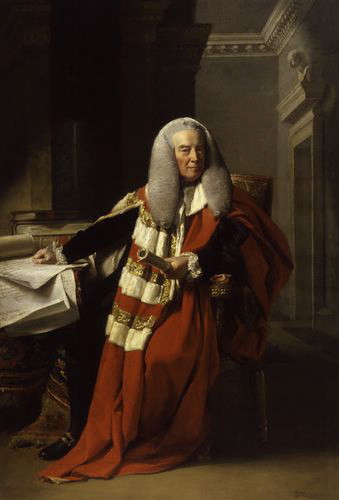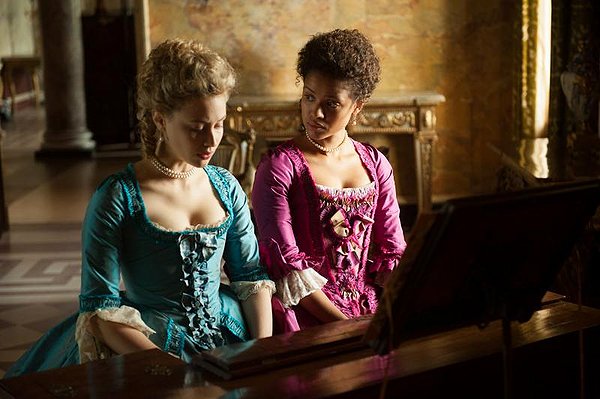 This week I saw the movie Belle. Have you had a chance to see it? Although it predates our Regency period (set in the 1780’s), it is a visual delight, from the costumes to the elegant estate settings to the docksides of London. There’s even a scene set at Vauxhall Gardens. Inspired by a portrait and a fascinating true historical footnote, it is about two young women, one white, one mulatto, who were raised together at Kenwood House by their uncle, Lord William Murray, the Earl of Mansfield, who happened to be the Lord Chief Justice of England at the time. It includes a love story, but it also is a tale about racial prejudice, an important court case, and the beginnings of the anti-slavery movement in England. It made me think (among many things) about all the matters our elegant Regency characters were expected to ignore, or at the very least, not discuss in polite company!
This week I saw the movie Belle. Have you had a chance to see it? Although it predates our Regency period (set in the 1780’s), it is a visual delight, from the costumes to the elegant estate settings to the docksides of London. There’s even a scene set at Vauxhall Gardens. Inspired by a portrait and a fascinating true historical footnote, it is about two young women, one white, one mulatto, who were raised together at Kenwood House by their uncle, Lord William Murray, the Earl of Mansfield, who happened to be the Lord Chief Justice of England at the time. It includes a love story, but it also is a tale about racial prejudice, an important court case, and the beginnings of the anti-slavery movement in England. It made me think (among many things) about all the matters our elegant Regency characters were expected to ignore, or at the very least, not discuss in polite company!
We know the rules of society were strict and multitudinous. Among them was the idea that conversation in polite company should always be “cheerful and uplifting”. It was never to include politics, or religion, or –heaven forbid!– vulgar acknowledgments of the less-than-perfect world outside the magic cloud of wealth and privilege that the highest classes lived in. Never anything that might cause distress or discomfort. As a line in the movie says, “as if by ignorance we might escape it.”
 The movie beautifully portrays Lord Mansfield’s belief in the value and purpose of “the rules” that maintained social order, and also Belle’s awakening to her own limitations, her hunger to learn more, and her frustration at having her questions turned aside. Slavery and racial prejudice were not topics to be discussed at the table! Her direct attempts to ask questions at breakfast clearly break the social rules, and the movie uses three breakfast scenes to show her attempts to comply and her gradual transition to other methods of pursuing the truth.
The movie beautifully portrays Lord Mansfield’s belief in the value and purpose of “the rules” that maintained social order, and also Belle’s awakening to her own limitations, her hunger to learn more, and her frustration at having her questions turned aside. Slavery and racial prejudice were not topics to be discussed at the table! Her direct attempts to ask questions at breakfast clearly break the social rules, and the movie uses three breakfast scenes to show her attempts to comply and her gradual transition to other methods of pursuing the truth.
 In the movie, the extreme complications of social status and jockeying for position are illustrated in dozens of nicely nuanced ways. Belle’s life is defined by both her birth into a noble family, and the color of her skin. She is made an heiress, while her cousin Elizabeth is dowerless. Belle is illegitimate, but her father loved and claimed her. Elizabeth’s birth was legitimate, but her father has abandoned her. Which elements trump which? Even the young women, raised as sisters, argue about it –but only in the privacy of their chamber, of course.
In the movie, the extreme complications of social status and jockeying for position are illustrated in dozens of nicely nuanced ways. Belle’s life is defined by both her birth into a noble family, and the color of her skin. She is made an heiress, while her cousin Elizabeth is dowerless. Belle is illegitimate, but her father loved and claimed her. Elizabeth’s birth was legitimate, but her father has abandoned her. Which elements trump which? Even the young women, raised as sisters, argue about it –but only in the privacy of their chamber, of course.
Is it any wonder that thick tomes of social guidelines were published? From Lord Chesterfield’s 18th century Letters to his son and similar publications, to The Mirror of Graces (1811) and on, the rules could cover the proper way to carry your hat if you removed it, and might even dictate when Belle could and could not join her family for dinner. But even those revered resources probably did not cover the untenable situation of Dido Elizabeth Belle Lindsay –both the movie version and the real woman we know so little about. As her character says in the movie, “I don’t feel as though I fit anywhere!”
The real Dido Belle did marry, and apparently had two sons. Her life, while far more comfortable than most of her counterparts in that period, still could not have been easy. I like thinking that she faced it with the same courage as her movie character does. If you haven’t had a chance, try to catch the movie! There’s also a book by Paula Byrne –has anyone read it? With all the social freedom we have today, do you think we still sometimes duck issues by falling into that mindset of ignoring them? Do we have any topics left that are still taboo in polite company today?

Thanks for your report on the move, Gail! I’ll make sure to get the DVD as soon as it becomes available.
I’m going to do that, too, Sandra –I liked the movie that much! Lots of artistic license, but you have to grant them that–for the story-telling, and also given not much real info to go on.
I thought it was pretty, but they took WAAAAAY too much artistic license with the actual history. One major example: Elizabeth was a great heiress (her uncle left her 10K pounds). Belle was left a tiny amount of money (500 pounds). Belle’s father left money to his OTHER (white)illegitimate kids, but Belle was pretty much ignored. So even what history we do have, they totally mucked around with for no apparent reason.
Isobel, I came to the movie without knowing much of the actual story, although aware they had changed it a lot. It seemed to me that all of the artistic license taken (and I agree there was a lot) was in the interest of making it a full-fledged story that would have commercial appeal to an unschooled modern audience, and I was willing to grant them that! I might have felt differently if I had already known more about it beforehand, but then again, I love movies and am willing to suspend a lot of my disbelief, LOL!
I will probably watch the movie on DVD for the artistic and social merits you mentioned, but having read a great deal about Belle (the real young lady) I find it interesting they chose to fiddle with the story so much. The real story is far more interesting, at least what we have of it.
These days with Facebook and twitter and sexting and everything else I doubt anything is taboo anymore. We discuss almost anything when we get together at my Mom’s for a meal, but there are some things she prefers not to talk about during a meal.
Louisa, as someone who has read a great deal about Dido/Belle, would you be willing to share some of the sources where the rest of us could also read more about the real story? The book I mentioned by Paula Byrne (which I have not read) was encouraged by the movie people (I hear), so I’m a little suspicious of it… Are there some other books or articles you might recommend?
Nobody eats breakfast together at my house, although we do try to make sure we gather for dinner. I guess we do steer clear of a few topics –politics being one–simply because we are not all of the same persuasion, and it keeps the peace! But we certainly are surrounded by those topics everywhere else we turn.
I loved this movie. I don’t know the original history, so I approached it almost as a fictional movie, and that worked for me. Things I loved about it:
— instead of defaulting to sloppy stage costuming (e.g. 18th-century gowns that lace up the back) they really attempted to have the clothes assemble correctly. (Sure, I could have lived with more fichus, but I understand why movies so often ditch them.) 😉
— the houses and backdrops were just amazing. Ooh, Kenwood! I just wanted to stop every frame and study it and live in it.
— I’ve loved Gugu Mbatha-Raw for years. She didn’t get to show off everything she can do here, but she really makes the movie work.
Anyway, that’s my tuppence…
Cara, thanks for posting! That’s just how I felt about the movie, too. A relief and a joy to have the costumes so correct. And visually stunning! It resonated so well with the idealized Regency settings in my head, I wanted to move right in. 🙂
I thought the romance storyline was very satisfying, but I also loved that the story was about so much more.
It’s amazing to me that Belle was even acknowledged by her father. He could have easily ignored her existence and there were no DNA tests back then! Thumbs up for the movie, even though they apparently went very far from the truth!